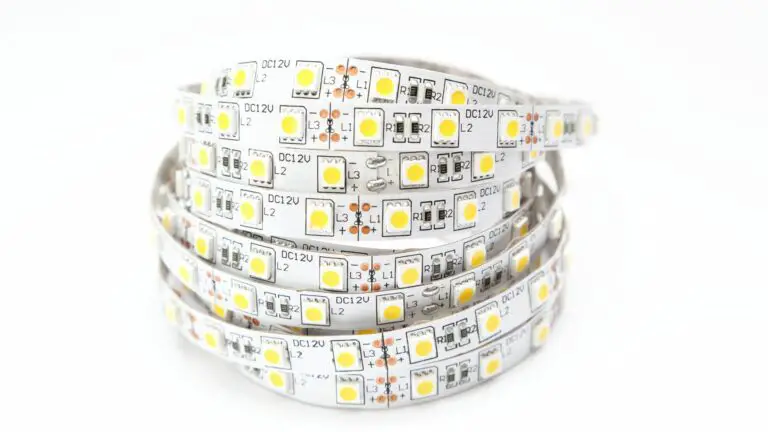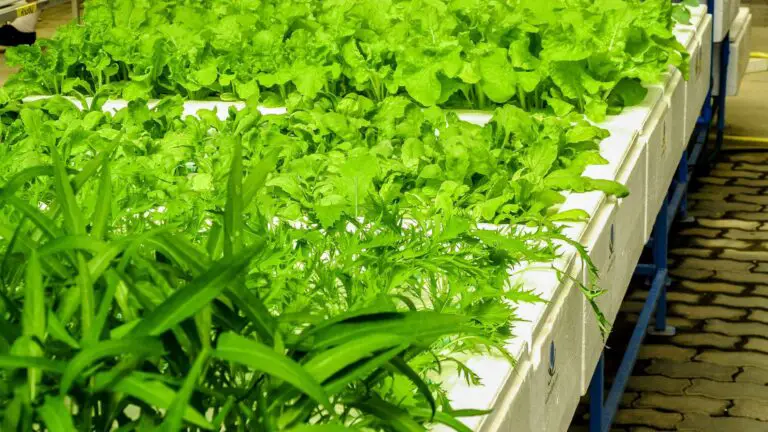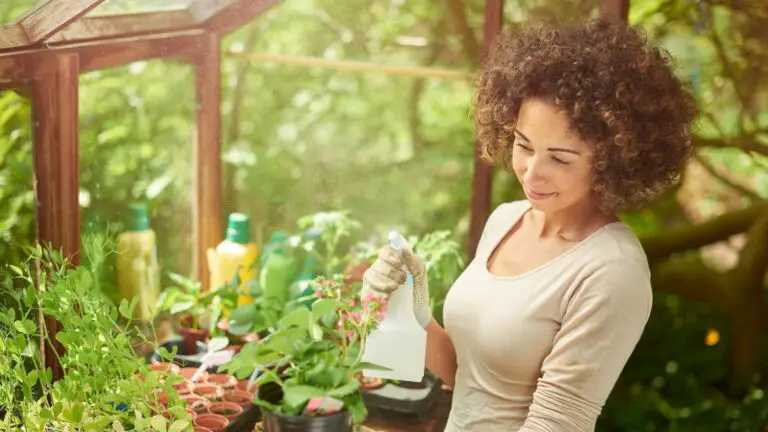What Hydroponic System is Ideal for Coastal Locations
Disclosure: Your purchases through our links may earn us a small commission, supporting our site’s ability to provide valuable information to our readers. Rest assured, it won’t impact your price. Thank you for your support.
In our earlier posts, we highlighted the importance of hydroponics in coastal areas worldwide and explored how to cultivate plants successfully in these unique environments adapting to the challenges. We discussed the various benefits of hydroponic systems, such as their high efficiency, low cost, and minimal environmental impact.
However, to successfully use hydroponic systems in coastal areas, there is a need for appropriate hydroponic systems that can deal with the unique challenges posed by these regions.
This blog post focuses on the different types of hydroponic systems best suited to coastal areas. We would discuss the pros and cons of each method and provide recommendations on the best technique to use.
What factors should be considered if you’re residing in a coastal region and looking to cultivate plants via the Hydroponic method?
When selecting a hydroponic system for use in coastal areas, there are several factors to consider.
- You should take into account the salinity levels of the area. This is because saltwater can damage and corrode certain parts of a hydroponic system and cause it to malfunction.
- You should consider the amount of light available in the region-specific systems that require more or less light than others.
- Temperature fluctuations are also important, as some systems can better deal with these than others.
- Consider the size of your hydroponic system and whether it is suitable for your available space.
- You should also consider the cost of running each type of system – some types may require more energy or water than others.
Several types of systems are available, each with a different set of advantages and disadvantages. Some hydroponic systems may be better suited to the unique challenges of coastal environments than others. By considering the unique conditions of coastal areas, you can select an appropriate hydroponic system for your needs.
Related:
6 Easy Steps to Prevent Algae Growth In Rockwool
Does Grow Light Temperature Matter?
Do Grow Light Colors Matter?
How Far Should Grow Lights Be From Plants That Are Growing Indoor
Grow Light vs. Sunlight: Which is the Best Option for Your Garden?
Hydroponic systems for use in coastal areas.
In this section, we will discuss the different types of hydroponic systems that are best suited for use in coastal areas.
Deep Water Culture (DWC) system
One hydroponic system that is particularly well-suited for coastal areas is the deep water culture (DWC) system. DWC systems involve suspending plants in nutrient-rich water and circulating air through the water to promote oxygenation.
You may find the below blog posts useful regarding DWC system
How to Set Up DIY Deep Water Culture (DWC) Hydroponic System?
How Deep Water Culture (DWC) Hydroponic System Works?
The Different Types of Growing Mediums for DWC (Deep Water Culture)
10 Tips for the Deep Water Culture (DWC) Hydroponics Systems (DIY)
Pros:
DWC systems are ideal for use in coastal areas because they are relatively simple to set up and operate and do not require much maintenance.
Although DWC systems can require extra gear such as air pumps, air stones, and tubings which may make them pricier to establish and maintain, the rewards of a successful harvest are well worth it.
Moreover, their submerged roots provide the plants with a constant flow of oxygenated water, promoting healthy root growth and maximizing yields. By using a DWC system, you can enjoy the benefits of hydroponic gardening without worrying about your water usage!
Cons:
DWC systems may not be as efficient as other hydroponic systems and may only be suitable for some plant varieties.
They also require a source of electricity to run the air pumps, which can be costly.
Dependent on an air pump to supply oxygen, DWC systems are designed to guard the plant’s roots against becoming submerged and drowned. In the event of a power outage or malfunctioning air pump, however, if left unnoticed for too long, those same roots may suffer without adequate oxygen supplies – leading them ultimately towards death.
You can find the necessary items to set up DWC system your own from Amazon. Or you can buy complete kit by authorized sellers from Amazon through the below given links.
DWC container, Air pump, Air stone, Net pots, Nutrients, Growing medium, Seeds or clones, Timer
If you are looking to buy complete kit for Deep Water Culture hydroponic (DWC) system click this link to select the best one suited for you.
Nutrient Film Technique (NFT) system
The nutrient film technique (NFT) system is another hydroponic system well-suited for use in coastal areas. NFT systems involve suspending plants in a shallow stream of nutrient-rich water constantly circulated through the system.
You may find the below blog posts useful regarding NFT system
How to Set Up a Nutrient Film Technique (NFT) Hydroponic System?
10 Benefits of Growing Plants with Nutrient Film Technique
Pros:
If you’re looking for a hydroponic system that’s water-efficient, space-saving, and capable of fast plant growth, then Nutrient Film Technique (NFT) is the way to go.
NFT systems are ideal for use in coastal areas because they are highly efficient and can use to grow a wide variety of plants.
This makes it great for areas with limited water resources and small-scale or urban farming operations because of its low water usage and minimal space requirements.
Plus, you won’t need to worry about investing in a substrate or growing medium – all you need are the plants and the nutrient solution! NFT systems can help you achieve quick and high yields without needing to break the bank.
Cons:
NFT systems provide convenience in terms of access to nutrition, but they can also be detrimental. By suspending plants above a shallow nutrient solution, their roots are more fragile, and what types of plants can ultimately be grown may become limited.
For proper hydration and nourishment of the plant’s roots, NFT systems must maintain an uninterrupted flow of nutrient solution. Unfortunately, a power outage interrupts this stream which can harm or even ruin your plants.
NFT systems demand additional specialized gear, like pumps and tubing, compared to other hydroponic systems. As a result of this requirement, they can be more expensive initially and in upkeep costs.
You can find the necessary items to set up NFT system your own from Amazon. Or you can buy complete kit by authorized sellers from Amazon through the below given links.
You can select the best container, water pumps, grow channels, timers, air pump and air stone, Net pots, Nutrients, Growing medium, Seeds or clones, Timer through these links. complete kit
If you are looking to buy complete kit for NFT hydroponic system click this link to select the best one suited for you.
Aeroponic system
A third hydroponic system well-suited for use in coastal areas is the aeroponic system. Aeroponic systems involve suspending plants in a mist or fog of nutrient-rich water constantly circulating through the system.
Pros:
If you live in a coastal region, you may want to consider aeroponic systems as an efficient way of growing plants.
Aeroponic systems are great for fast growth and high yields, as the nutrient solution is delivered directly to the plant’s roots through misting nozzles.
This method is also very water-efficient, as it uses much less water than other hydroponic systems.
Furthermore, aeroponic systems are versatile and can use to grow a variety of plants, including fruits, vegetables, and herbs.
Plus, they also don’t require any substrate or growing medium, which helps to reduce costs while still providing great results. So why not give aeroponic systems a try?
Cons:
Aeroponic systems can be relatively complex to set up and maintain, and they may require more equipment, such as high-pressure misters, misting chambers, and timers, these require extensive tech knowledge for mechanism optimization than other hydroponic systems.
Without a functioning pump, aeroponic systems are unable to supply their plants with the necessary mist of nutrient solution. Left unattended, these roots will quickly become deprived of moisture and eventually perish.
Aeroponic systems depend on extremely fine misters to transport the nutrient solution to the plant’s roots. When these misters become blocked, however, there is a high risk that vital nutrients won’t be able to reach their destination – and thus cause irreparable damage or even death of your beloved vegetation.
If you are looking to buy complete kit for Aeroponic system click this link to select the best one for your needs. suited for you.
Also, read:
How to Choose the Right Hydroponic System for Your Needs?
Why You Should Use Hydro Towers for Your Vegetables
Passive vs. Active Hydroponic Systems: What’s the Difference?
4 Common Types of Outdoor Hydroponic Systems
What is the best hydroponic system for you?
The best hydroponic system for use in coastal areas will depend on the specific needs of the grower and the plants being grown.
- A simple DWC system may be the best choice for growers who are just starting out.
- NFT or aeroponic systems may be a better choice for growers looking to grow a wide variety of plants and are willing to invest in more equipment.
Regardless of which hydroponic system is chosen, it is essential to carefully research the options and choose an approach well-suited to the unique challenges of coastal hydroponic gardening.
Thank you for reading!
Also, read:
Sponge as a Hydroponic Growing Medium: How It Works?
8 Must-Have Hydroponic Growing Supplies for a Successful Indoor Garden
How to Choose the Best Inline Fan for Your Grow Room
How to Measure EC, pH, DO and Temperature in a Hydroponic System





